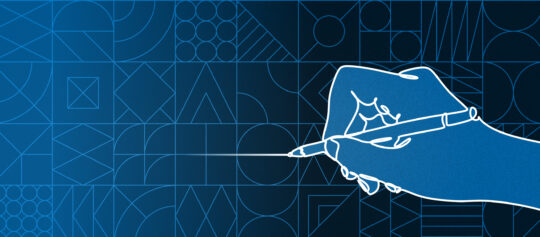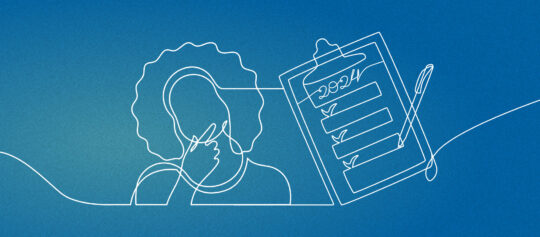In Era of Artificial Intelligence, Empathic Design Matters More Than Ever

With the rapid expansion of new technologies like AI, we can see in human beings a fascinating desire for technology to do human things. We’ve moved far beyond assembly line robots putting rivets into car panels or picking items off a shelf. Where machines once took over rote and physically demanding tasks, we now have machines that can talk, interpret, design, create, problem solve, iterate, reason, and more. In many cases technology is successful at this. In others, the jury is out, and it’s difficult to see where it all goes. Computers can talk, and they can listen, and they can interpret. But they can’t feel. A robot can be programmed to ask about a user’s feelings, but it wouldn’t actually be feeling. It might offer prompts like: “I am hearing that you are angry. Tell me why.” But that’s different from resonating with someone based on shared life experiences, and the emotional connections that humans make as a result.
Thankfully, there are still many areas where humanity triumphs over machines in clear and convincing ways. According to Shannon Ruetsch, Head of Experience Design at ETR, one of these areas is channeling empathy into better design work.
“Nothing can replace human empathy when it comes to the success of design. At the end of the day you have to sit down, talk, listen, and understand,” says Ruetsch. “That’s the basis of empathic design.”
“Analytics may show that a user visited a certain page on a website and spent a minute there,” Ruetsch says. “But that gives you no insight into why that happened or how the user felt about that experience. Data is great at letting us know what is happening, but it’s not so great at helping us understand why users are behaving in certain ways or how they feel about their experiences.”
To that end, we sat down with Ruetsch to get a better handle on what is at the crux of empathic design. Moreover, we wanted to get to the bottom of what the human feelings and emotions offer the process that no machines can.
Let’s talk about “empathic design.” What’s your take on what that means?
SR: It means coming at design from a place of understanding who you are designing for and what problems you are trying to solve for those people. It’s not doing design for design’s sake. At a high level, the goal with empathetic design is always to improve end users’ lives in some way, whether it’s making it easier for them to find what they are looking for on a website or reducing their chances of making an error on a form submission. At ETR we require that our design work, above all things, remains human-centered.
Purpose-Driven Design is ETR’s proprietary framework for solving design challenges. As part of that, ETR says “Usefulness depends on empathy.” Can you talk more about that?
SR: What is the purpose of design if you don’t have empathy for the people you’re trying to help on the other side of it? Design is not the same thing as art. Design must be usable, functional, and help end users achieve their goals. We prioritize and advocate for understanding users’ needs, goals, motivations, and current behaviors in order to equip us with the information we need to design products and features that deliver on the expectation of a great user experience. Unless the design has a useful purpose, it is not valuable. If it doesn’t achieve goals for end users and for the business, it’s not good design.
And so how would you say that ETR addresses that?
SR: Well, by definition for one to be empathetic, they must understand. That requires taking the time to investigate with both the stakeholders and the end users to define the problems and create the solutions. It means literally putting things in front of users to test them and make sure that what we’ve designed provides the warranted solution.
Do you have an example you can share of ETR and a client working closely and effectively on empathic design?
SR: There are many, of course, but VNS Health immediately comes to mind. They are a 130-year-old organization in New York that’s dedicated to home and community health care. One of their practice areas is hospice and end-of-life care. People in need of such services are in an extraordinarily sensitive and emotional state. They are afraid that by reaching out to ask for more information they are admitting defeat and feel they are giving up on their loved ones. It is an incredibly sensitive topic. So we talked to people who went through that. They were honestly very intense user interviews, but they offered so much clarity. They led us to understand the need to reassure users and metaphorically hold their hand through a very difficult time. It informed the voice and tone of everything we did. These people are scared when they’re reaching out. So we need to ease their fears, and to say explicitly that reaching out does not mean that they are giving up.
I would imagine in today’s world of innovation it would be easy to let technology run the show.
SR: It is common for stakeholders to be distracted by the shiny design or technology innovations that they see or hear about. But I like to say that for ETR empathy is our north star. Before we take any design step, we need to understand the purpose behind why we are doing it. That includes knowing who we are designing the experience for and what specific needs we are trying to solve for those people. Our job is to uncover and validate those user needs through research so that we can then advocate for meeting those user needs throughout the design process, keeping empathy for users at the forefront. Stakeholders have so many things coming at them. Our job as an agency is to ground them in why they’re doing what they’re doing, and not lose sight of the big picture goal to improve the lives of the end users of the products we design.
What do you think can stand in the way of clients getting empathic design?
SR: The resistance we can face from clients is “We already know our customers. We already have data. Look at our analytics, isn’t that enough?” Usually it is related to budget. We’ve found that if something’s going to get cut from a project, it’s often user research. In addition, we work with marketing teams who are typically under crazy time pressure. By necessity they are moving fast, so it’s often difficult to get to the real pain points because they are simply buried by the day-to-day obstacles they are forced to react to. It makes it hard to step back and prioritize research, to take time to really understand the end-users.
In an ideal world, how often do you think companies need to refresh or re-evaluate these kinds of research?
SR: Businesses are constantly changing their offerings and strategic positioning. Who they serve, and how they serve their customers is altered as a result. So certainly, upon the launch of any new feature, research is a must. Ideally, user research is happening on an ongoing basis within an organization. In lieu of that, I would say it is important to do at least some user research once a year to stay in tune with your customers and keep empathy for your end users top of mind. It is also necessary to review and update analytics on a regular basis. We see a lot of clients who try to design solutions to please everyone. We believe it is imperative to have a priority user in mind with any new feature or product that is developed.
How do you prevent biases from creeping into empathic design work?
SR: The best way we’ve found to mitigate bias is to follow research and best practices. We do our best to take in that information as if we’re a blank slate. We try not to offer opinions or ask leading questions. We do our best to keep it as neutral as possible. When we are gathering information, we seek to have at least two people analyze the research. It’s very easy for information to get skewed. When we have at least two brains in the mix, we can check each other.
What steps does ETR take to generate empathic design?
SR: Our overall Purpose Driven Design framework and process is our guide to the various steps along the way. It’s all coming from a place of needing to put the users first. And so we try to bake that into every step of our process. We talk to users from the beginning to understand what they want. Then later on, we validate our design with them by doing usability testing. We keep the user involved through all stages of our process, which is key.
Is there something about the team at ETR or in the philosophies of the organization that you feel sets you apart?
SR: At ETR we are very good at being human. We’re not the corporate-robot type. We are certainly buttoned up and professional, but we have a real ability to build rapport, to create easy, trusting relationships. We make our clients and their users feel comfortable. Inevitably, clients open up and share more with us than they might otherwise. And I think we have empathy not just for the end users, but for our stakeholders as well. Most of them are extremely busy executives running in a bajillion different directions. We often wait weeks to get on somebody’s calendar. That said, we’re very good at being patient and working with clients on that. We give a lot of grace; that is to say, we have empathy. We recognize that we all have the same end-goal in mind, to improve users’ lives and make a real difference in our clients’ businesses — and these are not mutually exclusive goals, they go hand-in-hand. Having empathy for your end users is good for business.
(Of course, here at ETR we’re not steering away from AI. In fact, we’ve already found many valuable ways to embrace it. Read on to see how.)
More Insights
Six Design Trends You Will See in 2024
In the field of design, trends come and go. As technologies evolve and user preferences shift, design trends naturally progress and adapt. Keeping up with the latest trends helps brands stay current and resonate more with consumers as their preferences evolve. Last year, we highlighted dynamic color, personalization, and simplicity. In 2024, we envision designers
‘Tis the Season to Commit to Exceptional Experiences: UX Resolutions for 2024
With December upon us, our thoughts turn to resolutions—the ways we can be better in the year to come. For us as an agency, that means constantly raising the bar for ourselves, our clients, our communities, our industry, our families, and our friends. For our UX team, whose job it is to advocate for users,

